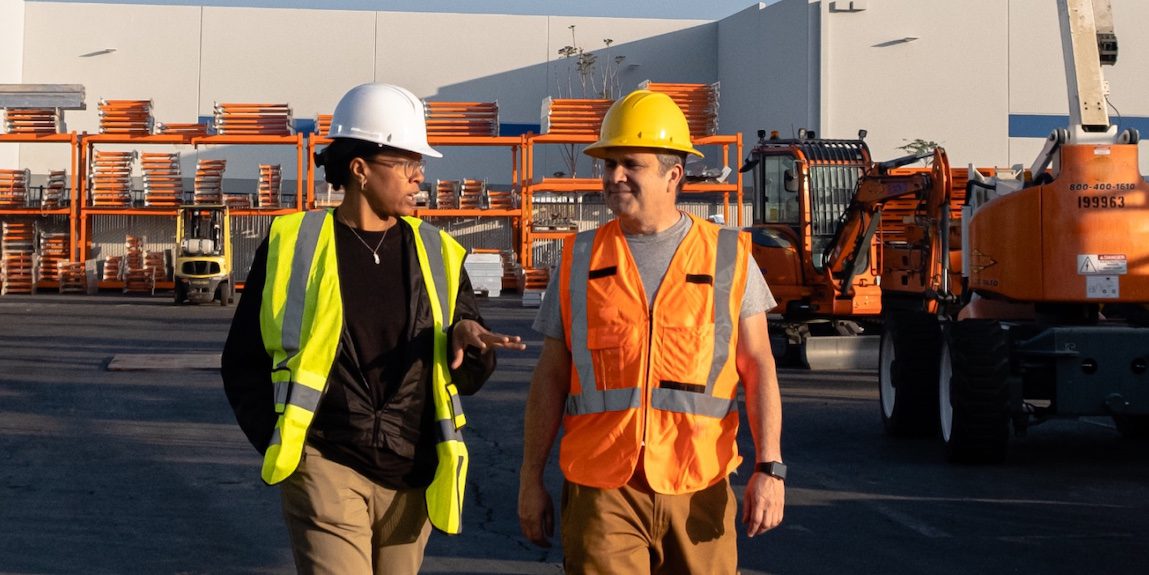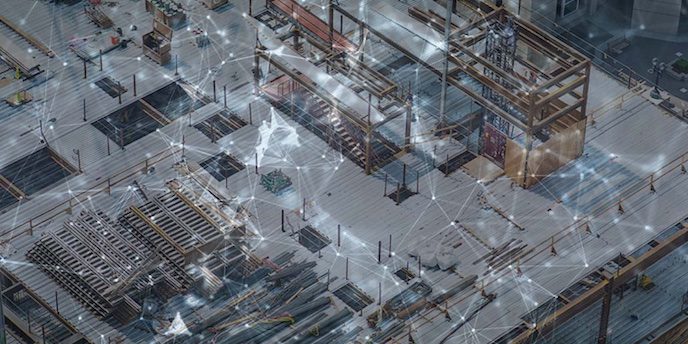

If you want to make connectivity absolutely fundamental to everything you do through the construction value chain, then it’s necessary to evangelize the benefits and be prepared to fight for it, a leading industry figure said at this year’s Trackunit Next.
“From an OEM perspective, they are driven by enabling their dealers and service network,” said industry leader Tom Bluth. “A key facilitator was higher standardization, supporting product lifecycle management to utilize technology.”
‘Companies need evangelists out there selling who really understand the value of connectivity.’
Tom Bluth
“A key challenge in the early days, was driving coordination across the company, the different stakeholders, product developers, division management, and others,” said the former CTO at Caterpillar. “Companies need evangelists out there selling who really understand the value of connectivity.”
Commoditization is essential for construction industry OEMs, as international products are required to meet various new government legislation regarding sustainability and safety. This is a challenge for OEMs in respect of machines and business cultures. Technology is now a key component to optimize business performance, eliminate downtime and create additional value within the construction ecosystem.
Herc Rentals’ COO, Aaron Birnbaum, was optimistic about the current technology trends.
“There is a lot of activity in the construction market,” said Birnbaum. “One key driver (in the US) that has been building for the past year or two is mega projects, such as chip manufacturing locations, and battery manufacturers.
“These need a lot of investment, and US Congress support which is coming online right now,” he said. “These very big projects require a lot of technology and fleet management solutions.”
Rental has led the industry as an early adopter of digitalization and a driver for OEM connectivity helping to underpin a projected rise in the global construction rental market value to $114.24 billion by 2026, up from $90.6 billion in 2021, according to analysts at Research and Markets. Couple this with manufacturers’ adoption of technology that is shown to significantly affect customer loyalty, and the die is cast in favor of continued digitalization.
‘…we are constantly working on new projects which require software development in design and building of the machines.’
Oana Samoila
Reduced margins and increased legislation are driving the need for data insights across access management, machine utilization, safety, and project management, whilst emissions and sustainability become increasingly important reporting requirements.

“This is a very busy year for us,” said Oana Samoila, Export Area Manager at Almac, the Italian scissor and boom lift manufacturer. “It’s our 10th year, and we are constantly working on new projects which require software development in design and building of the machines.”
Herc Rentals is also looking forward to a busy year, with the roll out of its fleet management platform ‘Pro Control NextGen’.
“We have been going through a two-year digital transformation, with internal IT experts and external software consultants,” Birnbaum said. “Trackunit was there to develop our telematics programme, and we are really excited about taking this solution to market. It will allow customers to take care of their fleet’s needs and ensure we are a more effective supplier.”
Customers often have their own sustainability business model and require best-of-breed solutions on their projects. Increasingly, construction companies are seeking to reduce fossil fuel consumption. However, this is not completely scalable across an entire business network or project site, yet this is increasingly demanded and applied to future projects.
“Municipalities and state agencies are very focused on this currently, and very motivated to only have current technology that’s sustainable on their projects, no matter what the cost,” said Birnbaum. “Others are not interested, for now, but are asking about it for future projects.”
Soeren Brogaard CEO at Trackunit, also picked up on the theme. “We all see that there is massive innovation and investments being made in fuel efficiency, sustainability, and reporting on CO2,” he said. “Yet, the ROI and the infrastructure to support this at scale is probably 10, 15 or 20 years out from this point.”
‘We are clearly on the journey to a more sustainable fleet, and we have identified products to move us along that journey over the next couple of years.’
Aaron Birnbaum
As the panel discussion developed, Birnbaum said that as far as sustainability was concerned, “…it’s a mixed bag from the customer perspective”.
“We manage around $6 billion in rental equipment,” he said. “Our fleet is roughly one third non-combustion engine with a lot of electric products in that number. We are clearly on the journey to a more sustainable fleet, and we have identified products to move us along that journey over the next couple of years.”
As a major customer to numerous OEMs, Herc Rentals obviously offers feedback to its OEM partners. “OEMs are where the innovation happens,” the Herc Rentals COO said. “Battery, solar and hybrid powered products will come online and we are confident that these could fit into our portfolio over the coming years.”
On the advance of the thinking machine, Samoila was particularly enthused on AI.
“AI is going to help manufacturers design machinery based on the way the end users themselves operate,” she said. “To use AI to analyze all the data coming back from the machine to see how it is used with all the mistakes, and all the positives, and then translate that into machines that are designed for use. I think that it’s going to be something we are going to see coming through AI in the next few years.”
“There is nothing better than real live site data coming back to you to understand application usage,” said Bluth in agreement. “Although this can only help if you really understand the processes you want to improve so you know what to measure.”
Bluth added that uncertainty, while disconcerting, would drive the industry forward through greater focus on costs, efficiencies, and higher utilization, with digitalization as a key lever to that evolution.
Watch this panel discussion from Trackunit Next on-demand.
See how IrisX unifies your data, accelerates decisions, and helps your business move from downtime to opportunity.

